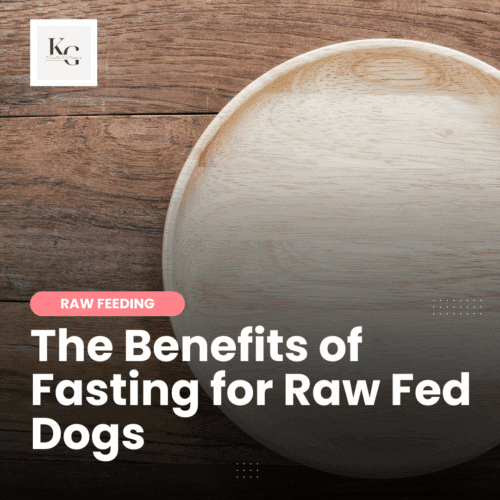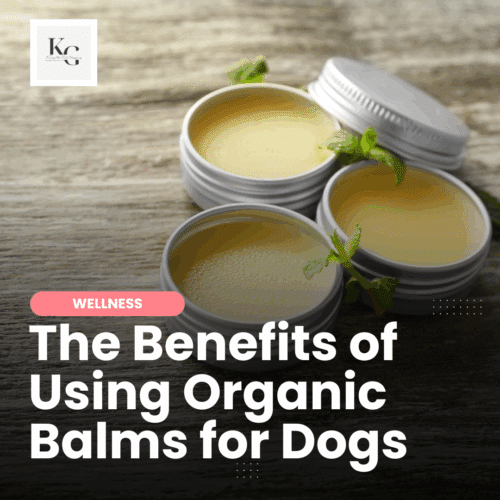Keep the Tail Wagging is supported by pet parents. I occasionally earn a commission (at no additional cost to you) when you click through an affiliate link to one of my favorite products. Thank you for your support. Read More
As someone who has been feeding my dogs a raw diet for over a decade, I can confidently say that this journey has been rewarding, eye-opening, and sometimes overwhelming. Raw feeding isn’t just a trend—it’s a commitment to understanding and meeting your dog’s natural needs. But like any major lifestyle choice, it has remarkable benefits and essential challenges.
If you’re considering switching to raw, here’s a balanced look at the pros and cons based on firsthand experience.
The Pros of Raw Feeding
Improved Health and Vitality
One of the most rewarding aspects of raw feeding is witnessing the incredible health transformations in your dog. Many raw feeders report:
- Shinier, healthier coats
- Cleaner teeth and fresher breath
- Smaller, firmer stools
- Increased energy and vitality
- Fewer allergies and skin issues
- Enhanced digestion and gut health
- Fewer veterinarian appointments
It’s hard to argue with these visible improvements once you’ve experienced them firsthand.
Full Control Over Ingredients
Feeding raw puts you in the driver’s seat. You know exactly what’s going into your dog’s bowl—no mystery meats, additives, or questionable fillers. This is especially empowering if your dog:
- Has food sensitivities
- Requires a limited-ingredient diet
- Benefits from specific proteins or fat levels
Control equals peace of mind.
Learning About Canine Nutrition
Raw feeding isn’t a “set it and forget it” method—it requires ongoing learning. You’ll quickly become familiar with:
- Macronutrients (proteins, fats, carbs)
- Essential vitamins and minerals
- Organ meat balance
- Whole-prey nutrition models
This deep dive into canine nutrition helps you better advocate for your dog’s health.
Tailored to Your Dog’s Needs
Every dog is different. Raw feeding allows you to adjust meals to meet individual needs:
- Puppies vs. seniors
- Working dogs vs. couch potatoes
- Dogs with medical conditions like kidney disease or joint issues
Customizing your dog’s diet becomes second nature with raw feeding.
Mental and Physical Enrichment
Feeding raw bones or meaty chunks engages your dog’s natural chewing instincts. This provides:
- Mental stimulation
- A natural outlet for stress and boredom
- Dental cleaning benefits
It’s a great way to enrich your dog’s life beyond just nutrition.
Potential Cost Savings on Vet Bills
While raw feeding can be expensive up front, many experienced feeders find that their dogs visit the vet less often for chronic skin, ear, and digestive issues, potentially saving money on medical care over time.
The Cons of Raw Feeding
Higher Upfront Cost
There’s no sugarcoating it—raw feeding is typically more expensive than commercial kibble, especially if:
- You opt for organic or grass-fed meats
- You have large or multiple dogs
- You use pre-made raw blends
Budgeting and sourcing bulk options can help, but cost is a real factor. I've saved money on raw feeding by shopping through a local raw food co-op, connecting with local homesteaders (who, in turn, connect me with others), and shopping sales. Ordering in bulk is more affordable, and I invested in refurbished freezers (I have two and a fridge in the garage) to store the food.
Sourcing Challenges
Finding a reliable, affordable source of high-quality meats, organs, and bones can be tough, especially in certain regions. You may need to:
- Build relationships with local butchers or farmers
- Join co-ops or bulk buying groups
- Get creative when sourcing less common organs (like spleen or pancreas)
It takes effort and planning. Homesteader and regional raw feeding groups on Facebook offer excellent networking opportunities for raw feeders.
Risk of Nutritional Imbalance
Raw feeding requires precision. Without proper knowledge, it’s easy to feed a deficient or unbalanced diet, which can:
- Cause nutrient deficiencies (like calcium, choline, manganese, or vitamin E)
- Lead to long-term health problems
For beginners, working with a canine nutritionist or following a proven raw feeding guide is essential to avoid mistakes. I began using a base mix to help reduce the risk of deficiencies. I also use Animal Diet Formulator software to ensure I cover all of my dogs' nutritional needs as I balance their diets over time.
Lack of Veterinary Support
Many traditional veterinarians remain skeptical or outright opposed to raw feeding, often citing:
- Concerns about bacterial risks
- Worries about unbalanced diets
This can leave you feeling unsupported or judged, and it may require seeking out holistic or integrative vets who understand raw feeding. I've found that the more educated I've become in canine nutrition, the better I can advocate for my dogs and explain why I choose to feed raw. There are many online courses for pet parents interested in expanding their knowledge.
Time and Labor Intensive
Unlike scooping kibble, raw feeding involves:
- Meal prepping (weighing, chopping, portioning, and sometimes grinding)
- Safe food storage and thawing
- Regular cleaning to prevent contamination (which is no different than when cooking my food)
It’s a time investment—some days, the extra work can feel overwhelming. I've reduced the time and labor through organization and planning. Most of the food I source through a local co-op is already ground, which saves time. And I spend one day a month doing meal prep, which usually takes 90 minutes to two hours (including prep and cleaning). I spend a weekend every few months making bone broth. And on the occasions I score meat and organs from local farmers and homesteaders, I spend the weekend dehydrating dog treats and making organ blends for meal prep.
Travel and Boarding Complications
Traveling with a raw-fed dog requires more planning. Not all boarding facilities or pet sitters are comfortable handling raw food, and you may need to:
- Pack coolers and ice packs
- Source local raw options while on the road
- Find raw-friendly care providers
- Invest in freeze-dried or dehydrated pet foods
Raw Feeding is Rewarding
Raw feeding is a deeply rewarding but a serious commitment. The health benefits and personal empowerment it brings are unmatched, but success requires:
- Ongoing education
- Careful planning and budgeting
- A willingness to troubleshoot challenges
If you're prepared to invest the time, effort, and resources, raw feeding can transform your dog’s health and deepen your bond. But it’s equally important to be honest about the obstacles and know that it’s okay if raw isn’t the right fit for every dog or household. I've overcome many of the downsides of raw feeding by remaining open to new information and tips from other raw feeders. Eventually, feeding raw became second nature without any stress or overwhelm.
Whatever path you choose, the most important thing is to stay informed and always advocate for the best for your beloved companion.






I will do knuckle bones and kneecaps under supervision. The dogs are biting down on them to make the sliver like they do with rib bones. What sucks is that I have a freezer full of these bones and the dogs only get them outside, so they won’t see the sun until May. I wonder if I should try and swap them with someone.
My thought is that as long as your uncomfortable, then you shouldn’t do it. There’s nothing like the stress of worrying that you’ll do something wrong. Accidents happen. I think most raw feeders have had a moment of “this isn’t for me.”
That is the WORST! I have dehydrated on hand for when I completely space. I’ve done really well for a while now, but that’s only because I now have a routine (I’m cutting, carving, chopping and grinding every other weekend). Sad that it took me a year to develop a routine. LOL
I’ve been leaning toward raw feeding for a while now, and your article pushed me over the edge. Thanks for the pros and cons — they were super helpful. Now to just not forget to thaw their meals.
I think bones are very scary to some people, and for good reason. I have never had an issue giving my dog raw chicken and turkey bones, but it does still worry me a little. I’m too much of a worrier to give him pork bones, even though I know lots of people do with no issues. I don’t do recreational bones either. I go with bully sticks, Nylabones, etc. But of course, nothing is 100 percent safe. I remember your Nylabone post!
My gut tells me it would probably be better for my guys, but unfortunately, too many of those cons resonate with me…
Good for her!!! LOL
For some dogs. Raw isn’t for all dogs (or people).
Thanks for the add. You’re not the first person to share this with me recently and I love that so many pet owners are on the same page. Thanks so much!!!
Hey, isn’t raw meat the natural food for dogs?
This is a great comparison. Raw is the best choice for us!
Cookie is in a process of convincing me to put her on raw.
We totally agree with your post ! As you say, feeding raw needs time and knowledge : “go with the best kibbles”. We would like to add “or the best canned food” : some small brands have high quality canned food made with a high content level of meat, quality ingredients, soft cooking, soft preservation of vitamins, without filling agents, without cheap meat flour, without reconstituted meat, without hormonal residues and antibiotics. You have a natural healthy canned food that you can make healthier in the way you say in your other linked blogpost. Mum has no time to feed us raw, but she discovered one brand like this and loved it so much that she’s now advisor for them ! They make dog food and cat food, wet or dry. Purrs